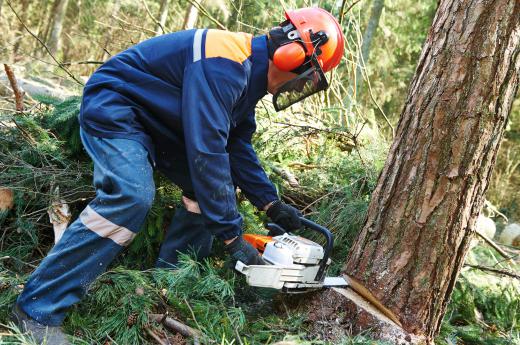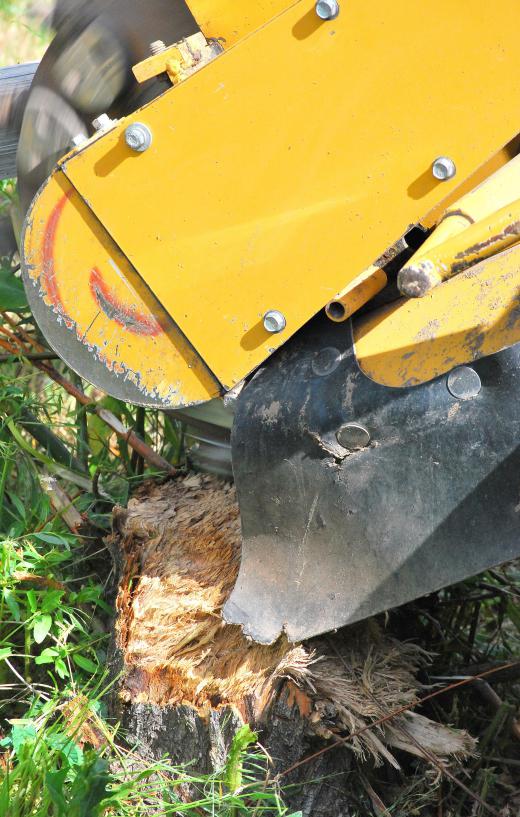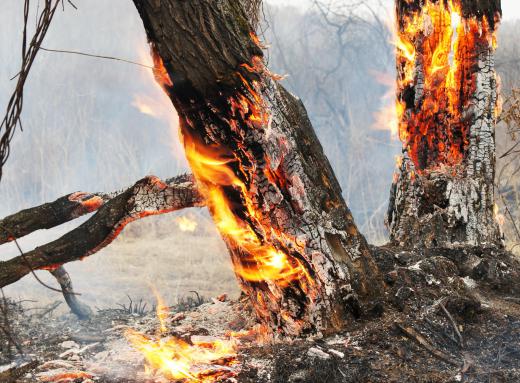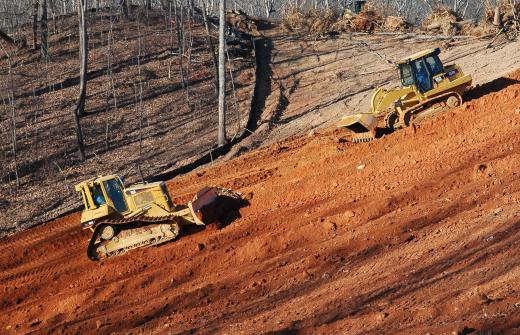Land clearing involves the removal of trees and brush on a piece of land. Depending on the size, location, and purpose of the land, the excavation may require professional land clearing equipment. Pushover, cut and grind, and burning are three of the most used land clearing methods.
The pushover method of land clearing often involves the use of major construction equipment. The trees are pushed over and hauled off the land with the roots intact. Once the trees are moved to a central location, they are often processed for sale or ground for use as a mulching material.

The cut and grind method begins with cutting down the trees on the piece of land. These trees are often moved to a processing location, but the stumps are left in the ground. These stumps can be ground into mulching material or pulled out of the grown using a large piece of construction machinery.
Using a controlled burn for land clearing can be one of the most dangerous methods. Burning involves starting a controlled fire and maintaining that fire until all trees and brush are burned to the ground. After the fires are extinguished, the land can be cleared using a bull dozer or other piece of construction equipment.

While some small plots of land may be cleared without the help of a professional, larger plots of land may be more difficult to clear without a team of specialists. This team will often be trained in the fastest and most effective methods of land clearing. They are also more likely to be trained in the local laws and regulations regarding the clearing of land.

One additional option some people choose involves selling the timber located on the plot of land. If the timber is sold before the land is cleared, some timber companies will bring in a team of workers and equipment to clear the land at no cost to the landowner. It is important to ensure that the timber company will not only clear the land, but clean up the debris after the timber has been removed from the plot.

The landowner should remember that land clearing leaves the surface layer of topsoil open to the elements and erosion. This top layer of dirt can be preserved by planting grass in this soil. While the grass may not be needed on the entire lot, it can be easier to remove a patch of grass for development than to import new dirt, to prevent soil loss.
